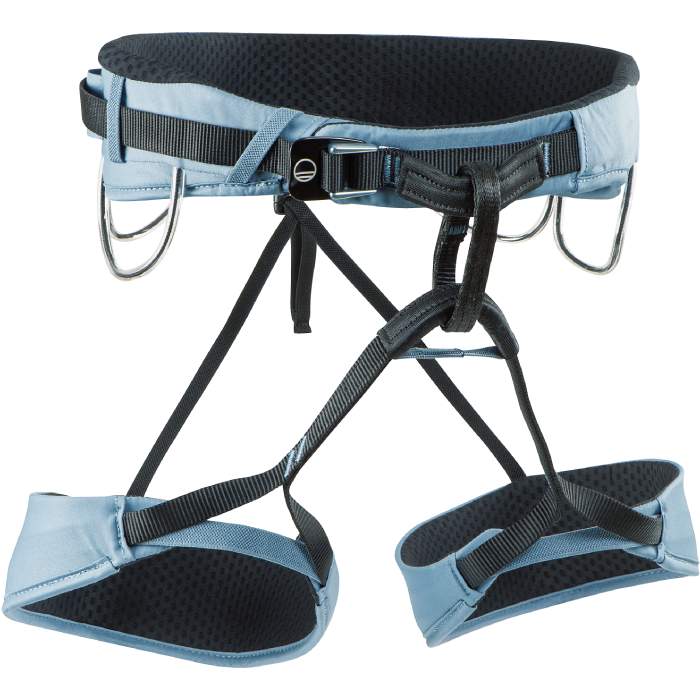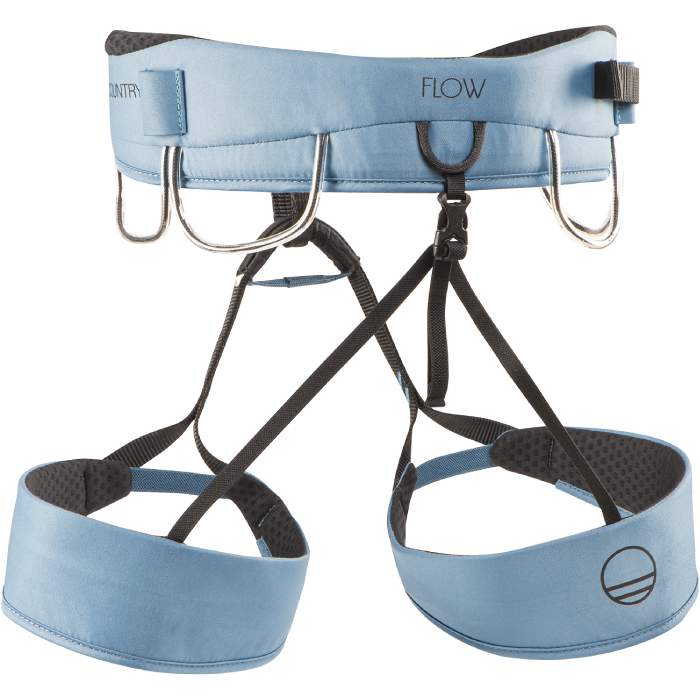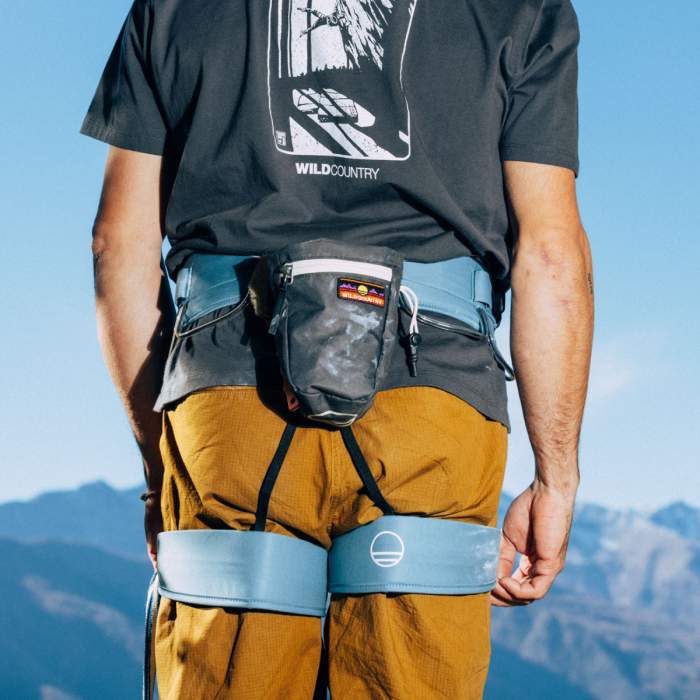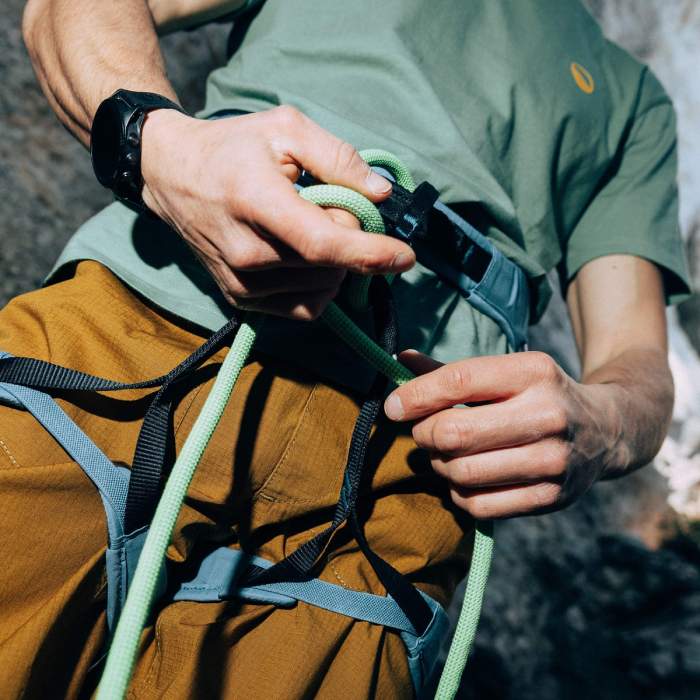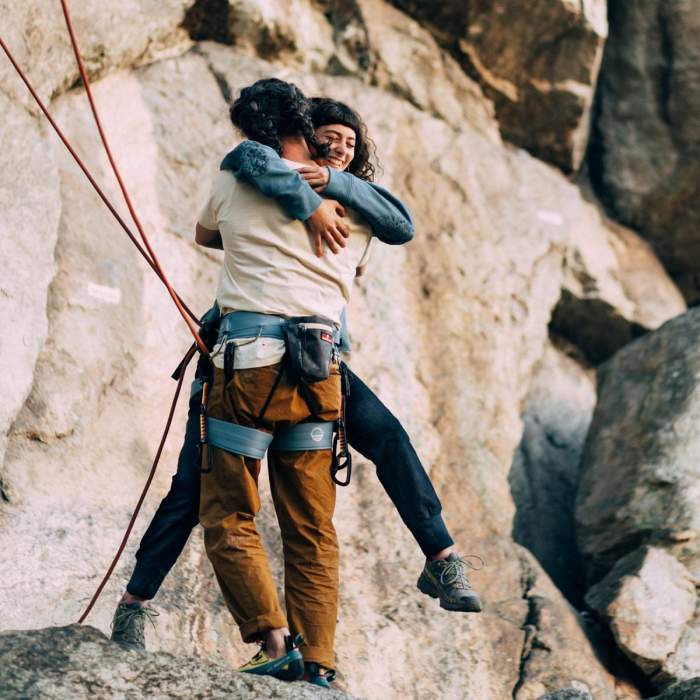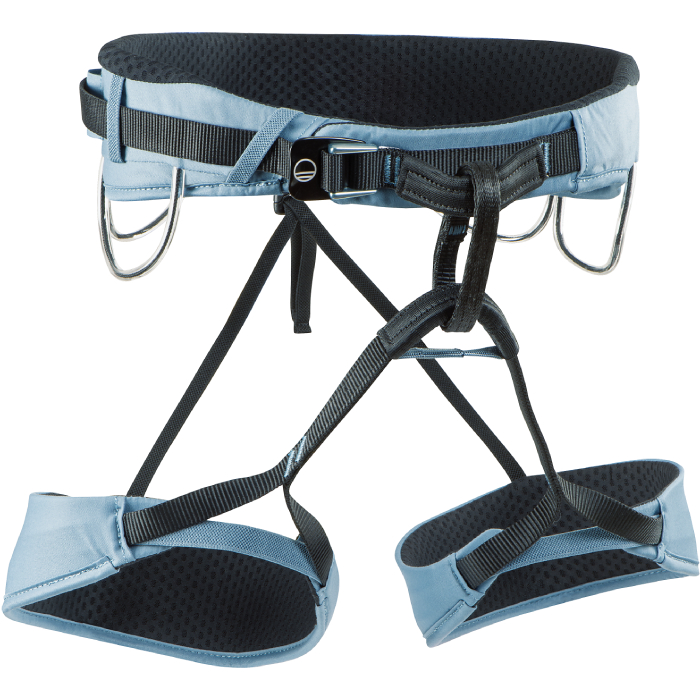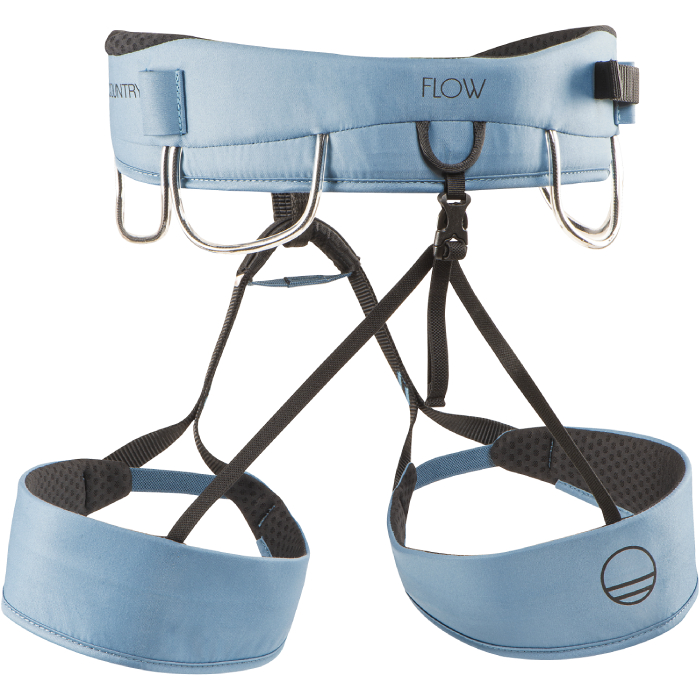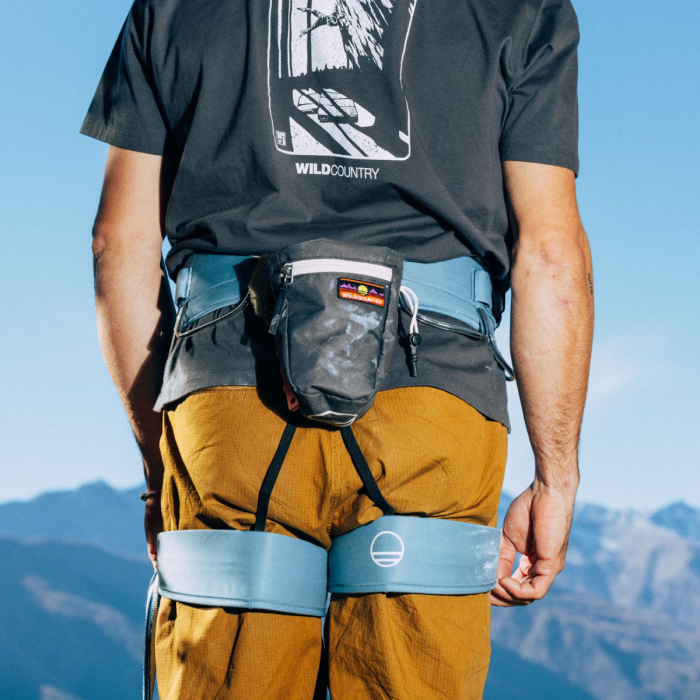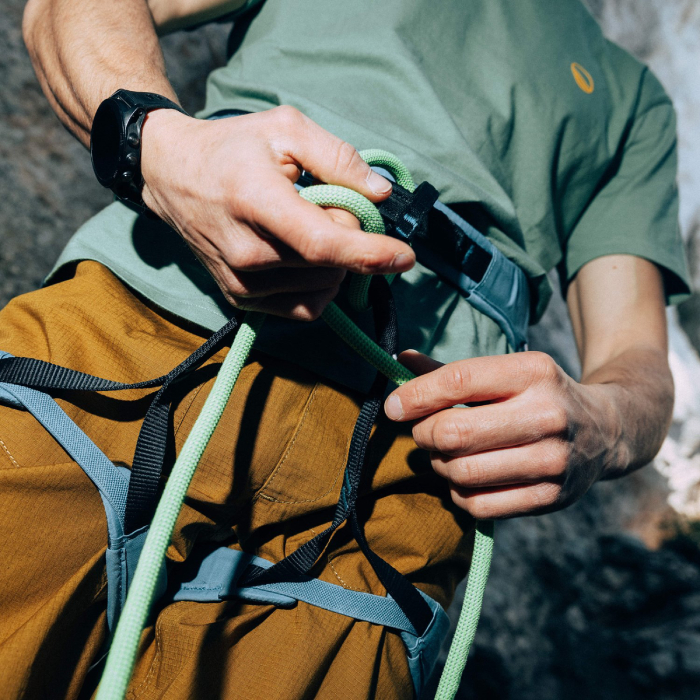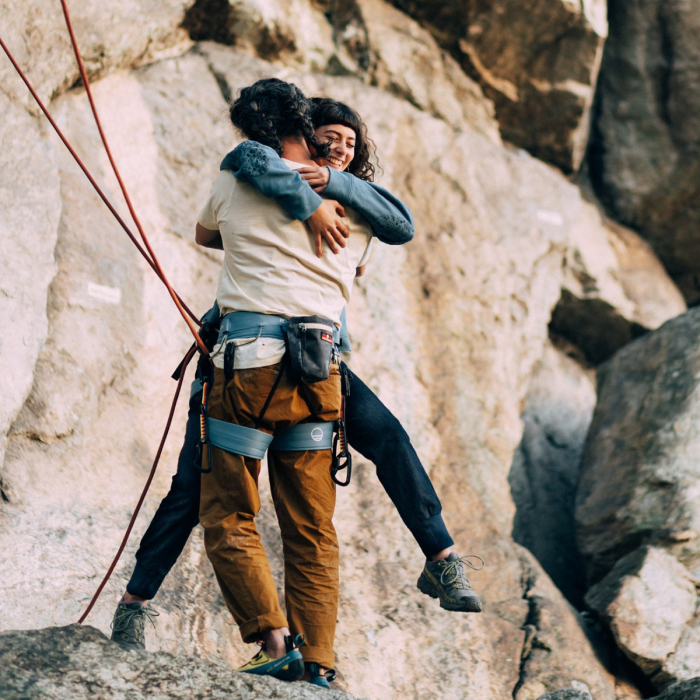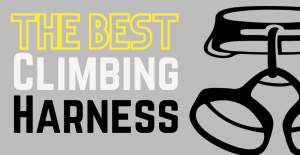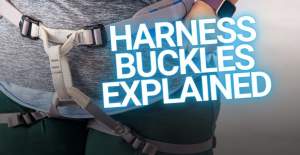General information and pictorial instruction for using correctly.
Flow 2.0 Men
Description
A comfortable, all-round men’s harness for indoor, outdoor, sport and multi-pitch use. The Flow 2.0 men’s harness is engineered with a clean, sleek design and comfortable padding for enhanced support and breathability.
The waistbelt construction ensures that loading is well distributed across the lower back to prevent pressure points. Its soft webbing and generous air-permeable padding has a comfortable inner mesh fabric lining. With a pre-threaded, smooth-running adjustable buckle to prevent tying-in errors, fixed leg loops and reinforced lower tie-in point with wear indicator for additional safety.
- Designed for optimum comfort
- Soft inner mesh fabric padding and edges
- Four 3D gear loops
- Single steel buckle for secure closure
- Adjustable waistbelt
- Fixed, elasticated leg loops with adjustable top clip
- Integrated wear indicator at lower tie-in point
- PFC-free
- Storage bag included
- Four 3D SHAPED gearloops
- Wild Country is a member of the Fair Wear Foundation
Retail price
When you click a link below and then checkout online, no matter what you buy (climbing gear or not), we get a small commission that helps us keep this site up-to-date. Thanks!
Weight (g)  WeightIn grams, the weight, as stated by the manufacturer/brand. If there are differences in weight (due to multiple sizes or optional accessories) we'll list them here. The default weight is the middle-most size, often this is size M. | 325 g S: 305 g / 10.8 oz
M: 325 g / 11.5 oz L: 335 g / 11.8 oz XL: 350 g / 12.3 oz
(weight converted from grams to ounces) |
| Fit | Men |
| Sizes | XS, S, M, L, XL, XXL |
Gear Loops  Number of Gear LoopsGear loops are used to hold gear (quickdraws, cams, etc) onto your harness. 4 gear loops is most common. 
0 - 1 Gear LoopsMost often on full body harnesses or guide/gym style harnesses. 2-3 Gear LoopsMostly found on lighter harnesses made for [ski] mountaineering or high-end sport climbing where weight is a high priority. 4 - 5 Gear LoopsThe standard/most common number for climbing harnesses. Perfect for sport and trad. More Than 6 Gear LoopsDesigned for long multi-pitch and big wall climbing, found on harnesses made to hold the maximum amount of gear. Worth ConsideringOccasionally, the number of gear loops will change on a harness model depending on the size. There could be 7 gear loops for the med/large but only 5 gear loops for the xsmall/small. In this case we list the highest number for the filters, and then write an explanation on the product page like, “Size S/XS can only fit 5 gear loops.” | 4 Gear loops |
Ice Clip Slots  Ice Clip SlotIce clipper slots are made to fit a carabiner that holds ice screws. These slots are generally only used by ice climbers but there is no disadvantage to having them on your harness. 
Less than 40% of harnesses will have ice clipper slots. And those harnesses will usually have 2 or 4 slots, often located next to, or between, the gear loops. | Yes, 2 |
| Belay / Tie-In | One Loop |
| Waist Buckle Type | Quick Adjust |
| Leg Buckle Type | None (it stretches) |
| Drop Seat | Yes |
Haul Loop  Haul LoopTrad climbers often look for a haul loop as they're intended to haul a rope (second line) or pack (while you climb the chimney). 
A haul loop can also hold shoes or other accessories. Although not the intended use, it is also commonly used to hold a chalk bag. | Yes (0kN) |
| Certification | CE, EN |
| Size Chart | S (will fit the upper range of XS)
Waist: 71-79 cm / 27.9.1-31.1 in Legs: 50-59 cm / 19.7-23.2 in M Waist: 79-88 cm / 31.1-34.6 in Legs: 55-64 cm / 21.7-25.2 in L Waist: 87-95 cm / 34.3-37.4 in Legs: 60-69 cm / 23.6-27.2 in XL (will fit the lower range of XXL)
Waist: 95-105 cm / 37.4-41.3 in Legs: 63-71 cm / 24.8-28 in (we converted centimeters to inches)
|
No reviews yet.
A pictoral representation of UIAA-105 and EN-12277 standards for harnesses.
The UIAA equipment standard provides a baseline for equipment performance in a test lab under controlled conditions on new equipment. Although these test conditions are relevant to the conditions encountered climbing, conditions encountered at the crags and the condition of the equipment are equally important. This recommendation from the UIAA member federation The British Mountaineering Council (BMC) provides vital equipment information that is NOT explicitly addressed in the standard, particularly failure modes of the equipment and recommendations for the use, inspection, maintenance, and retirement of equipment.

